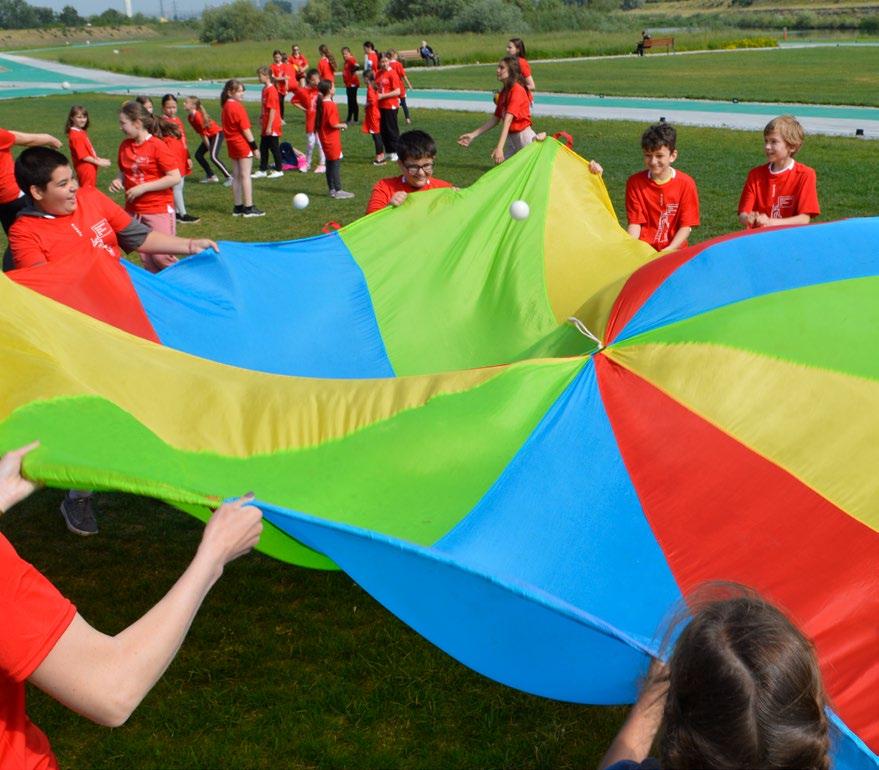
2 minute read
PLACEMAKING FOR ACTIVE RECREATION TOOLKIT
CURATORS OF THE TOOLS COLLECTION:
Anna Bradley, Vivian Doumpa, Olga Sowa, Dimitra Zouni
Advertisement
CONTRIBUTORS:
Laska Nenova, Vlad Fedorov
DESIGN: studio PUNKT
This project has been funded with support from the European Commission. This publication reflects the views only of the author, and the Commission cannot be held responsible for any use which may be made of the information contained therein.
Funded by:
Coordinator:
Official Partner of:
Implementing Organisations:
Experts:
About
The PARK toolkit came out of the need to develop a methodological framework for civic society organisations working in the field of HEPA (health enhancing physical activity) and placemaking, which organises and enhances the existing knowledge and experience of the community. Therefore, this toolkit is directed towards sport organisers, community programmers, placemakers and place-managers, as well as active residents who are passionate to bring together their community around their shared public realm with movement.
WHY DOES THIS TOOLKIT EXIST?
The toolkit has been developed according to the needs of organisations of the field, who promote physical activity and are involved or interested in placemaking, deriving from different contexts. The PARK toolkit is “here” to provide capacity building between the fields of community sport organisers and placemakers, while putting together the existing knowledge and skills of the field in the pursuit to co-create and support great places in our cities that motivate movement, wellbeing, health and recreation together. The “belief” in this toolkit derives from our trust that we heal our cities through the intertwined paradigm of embodied movement in space (physical activity) and sense of belonging (attachment to place) as a collective process.
WHAT DOES IT OFFER YOU?
The PARK Toolkit evolves as a connecting and feedback loop between aims of community building and movement, around a shared public realm. Specifically, it offers a framework which organises the methodology of placemaking for physical activity in a step-by-step process, and provides examples and tools for each stage. The toolkit includes innovative practices to reach your target audience, “lighter – quicker – cheaper” interventions for experimenting with your users in order to find a long-term solution, easy and discrete resources to guide you in your grassroots sport project, along with real casestudies with their tips and recommendations to inspire your own practice.
HOW WILL YOU USE IT?
The PARK toolkit is developed in a hands-on mentality that placemakers and actors of the grassroots sports field have. This means that the tools provided are completely practical and applicable, they allow room for flexibility and adaptation, and they can be repeated as much as needed. Of course, you do not need to go through all the stages and tools at once, but rather see this framework as a way of organising your thought and implementation in the long run. Moreover, the toolkit is an open-source “product”, through which we invite you to experiment with, while sharing your experience with it and inviting your peers to learn from each other and crosspollinate our knowledge. We would like to follow up with your experience of using the toolkit, so feel free to tag us and our partners while sharing your adventures online, using the #letshealourcities tag.
From our comprehensive research, together, we have identified 100+ tools and resources that contribute to building capacity for both placemakers and sport professionals.
From the 100+ selected we have outlined around 25 which we advise you to start with. These tools also importantly act as shared resources to overlap the fields.
The Park Toolkit
• Selected tools
• Linked to the Placemaking for Active Recreation Approach stages
• Action oriented
• User-friendly
• Inspirational
• Exemplary
• Mixed formats
What Is In The Tools Collection
• Planning Tools
• Community Space Design tools
• Public Engagement tools
• Interventions & Experiments tools
• Evaluating & Measuring tools
• Sustainability & Advocacy tools

